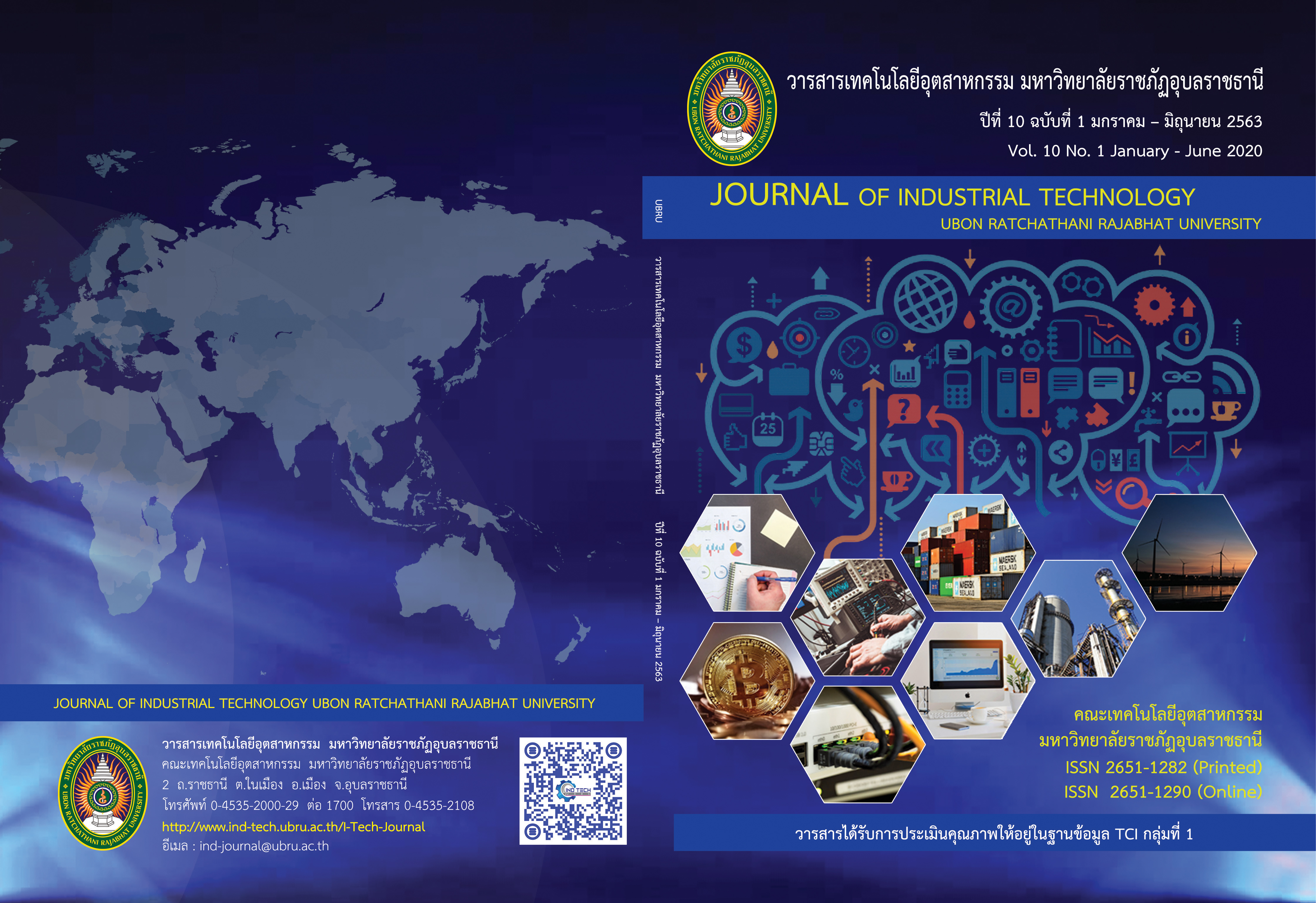ESTIMATION OF MAXIMUM BENDING MOMENT FOR THIN-WALLED CYLINDRICAL TUBE
Main Article Content
Abstract
This paper was aimed to write the mathematic model in order to determine the maximum bending moment of circular tube subjected to bending. The research was divided in two different approaches, experiments, and theoretical prediction. The experiment used mild steel of different diameter to thickness ratios ranges from 21.16 to 44.36 and each was triplicate to find average value of maximum bending moment. The theoretical prediction was to determine the maximum bending moment of tube by noticing a collapse behavior of tube at the maximum moment position of the moment-rotation response. This approach was assumed that sectional. The collapsed behavior of sectional tube was oval. The oval section has the major axis was 1.1R and minor axis was 0.95R (R was the outside radius of tube). Form the theoretical prediction results were compared with experiment and other available models. The results showed good agreement between the theoretical prediction and experimental results.
Article Details

This work is licensed under a Creative Commons Attribution-NonCommercial-NoDerivatives 4.0 International License.
Articles published in Journal of Industrial Technology Ubon Ratchathani Rajabhat University both hard copy and electronically are belonged to the Journal.
References
Kecman D. Bending Collapse of Rectangular and Square Section Tubes. International Journal 249 of Mechanical Sciences.1983: 25(9-10); 623-636.
Prinja N. K., Chitkara, N. R. Post-collapse Cross-sectional Flattening of Thick Pipes in Plastic Bending. Nuclear Engineering and Design.1984: 83(1); 113-121.
Ueda S. Moment-Rotation Relationship Considering Flattening of Pipe due to pipe Whip Loading. Nuclear Engineering and Design.1985: 85; 251-259.
Wierzbicki, T, S, U, Initiation and Propagation of Buckles in Pipelines. International. Journal of Solids and Structures.1986: 22(9); 985-1005.
Wierzbicki T. and Suh, M. S, Indentation of tubes under combined loading. International Journal of Mechanical Science.1988: 30(3-4); 229-248.
Mamalis, A, G, et al. On the Effect of Shear When Bending Crashworthy Thin-Walled Steel Tubes. Thin-Walled Structures.1992: 14(2); 153-165.
Cimpoeru S, J., and Murray N, W. The large-deflection pure bending properties of a square thin-walled tube. International Journal of Mechanical Science. 1993: 35(3-4); 247-256.
Kotelko M, Krolak. M. Collapse behaviour of triangular cross-section girders subjected to pure bending. Thin-walled structure.1993: 15; 127-141.
Wierzbicki T, and Sinmao M. V. A Simplified Model of Brazier Effect in Plastic Bending of Cylindrical Tubes. International Journal of Pressure Vessels and Piping.1997: 71(1); 19-28.
Kim T, H, and; Reid S. R. Bending Collapse of Thin-Walled Rectangular Section Columns. Computer & Structures.2001: 79(20-21): 1897-1991.
Elchalakani M, Zhao, X, L. and Grzebiet R. H, Plastic Mechanism Analysis of Circular Tubes Under Pure Bending. International Journal of Mechanical Science.2002: 44(6): 1117-1143.
Poonaya S, Teeboonma U, Thinvongpituk C. Plastic collapse analysis of thin-walled circular tubes subjected to bending. Thin-Walled Structure.2009; 47: 637-645.


